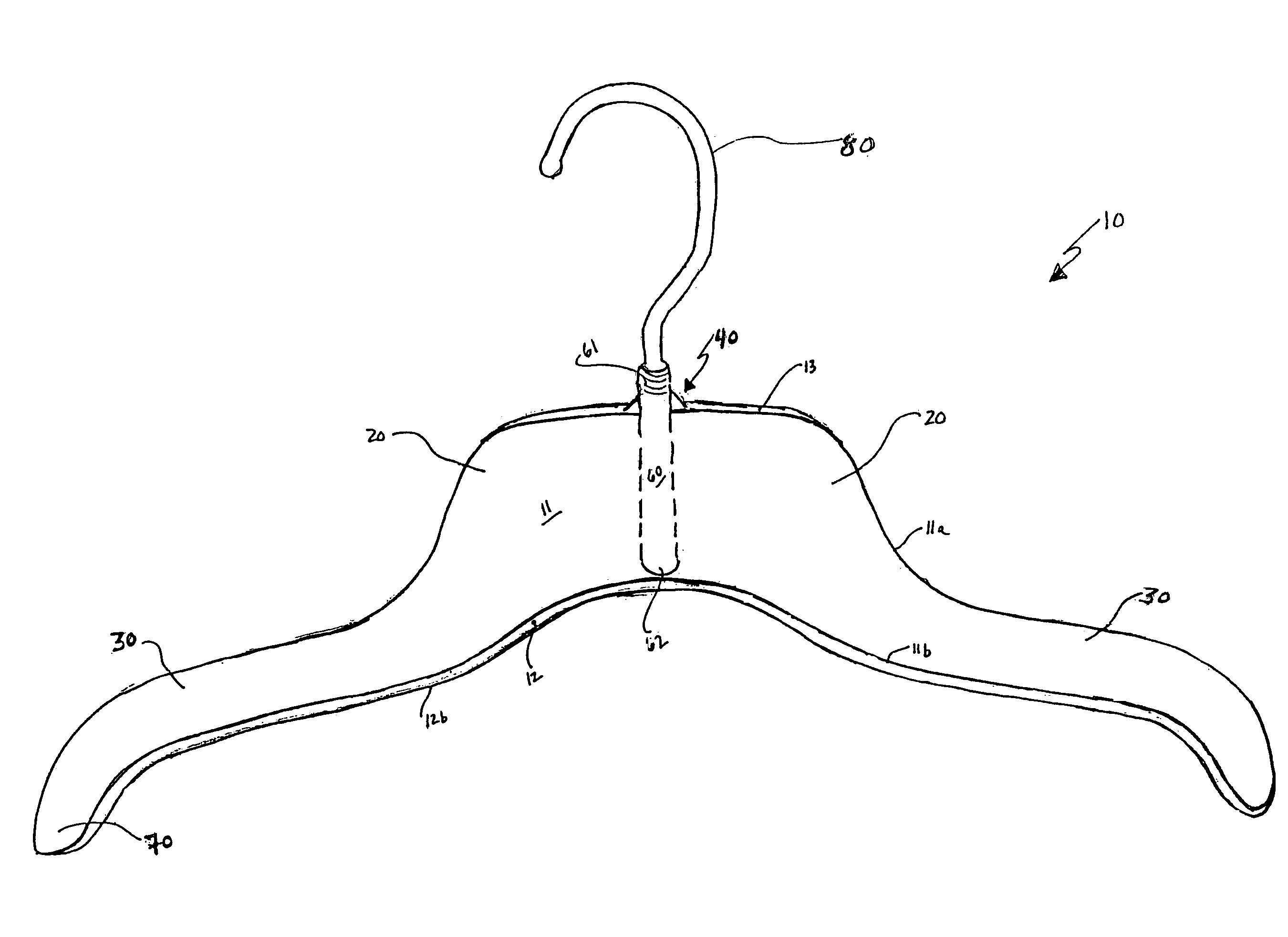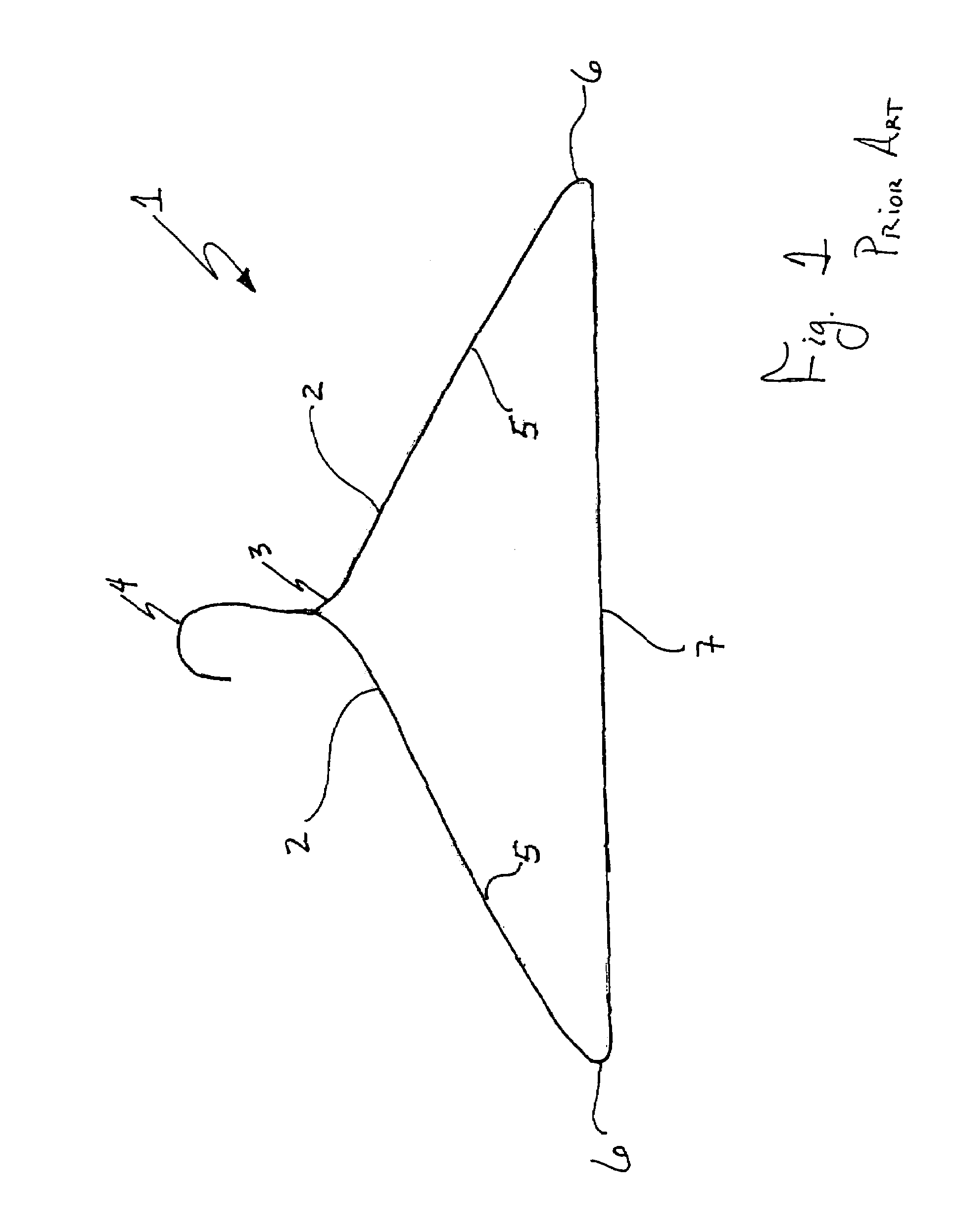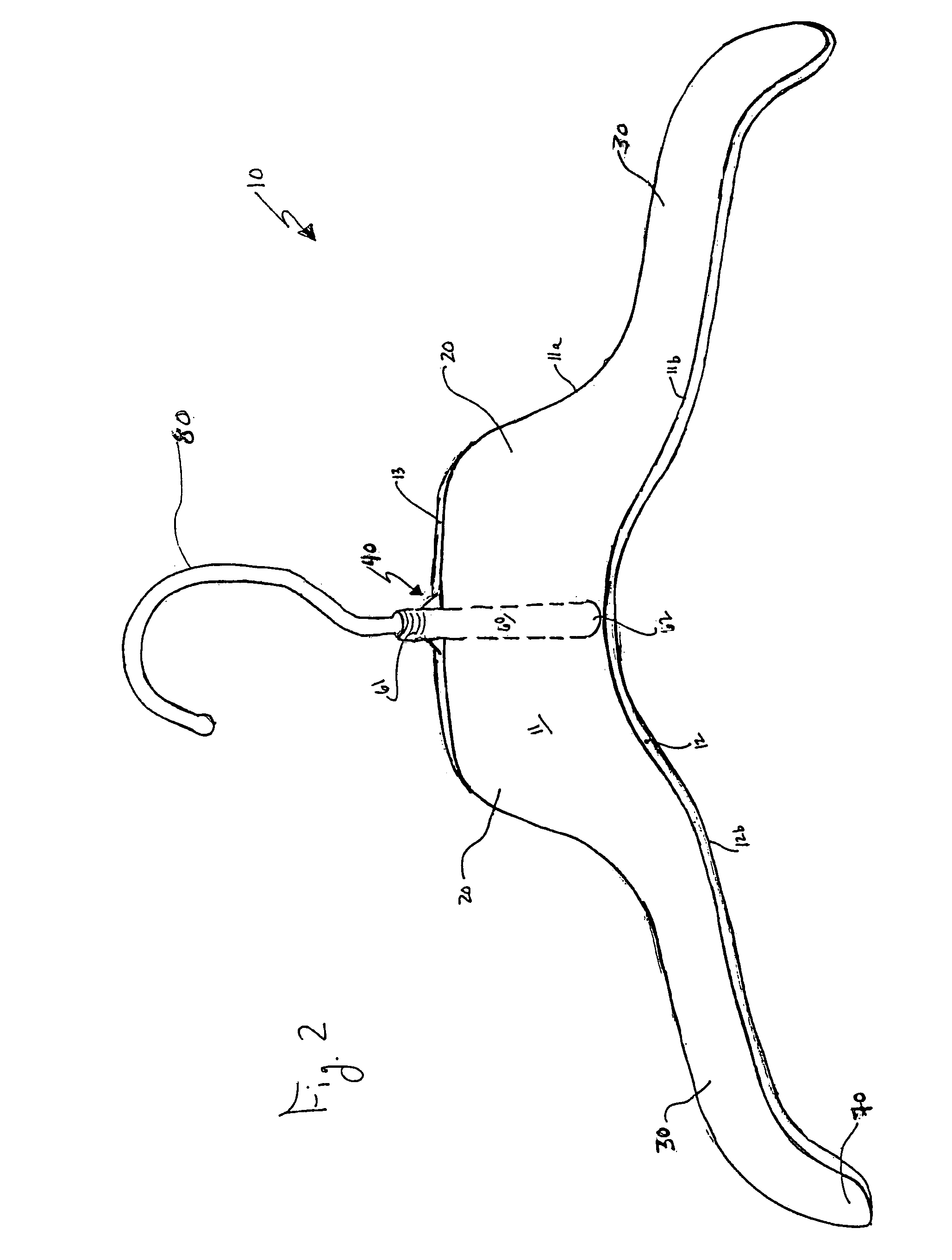Garment hanger with central support rib
a technology of central support and garment hangers, which is applied in the field of garment hangers, can solve the problems of rippling or other undesirable marring of the exposed surface of the arms of the hangers, increasing the time and cost of manufacturing such hangers, and even breaking the transition region under heavy garment loads, so as to increase the resistance to twisting. , the effect of increasing strength and stability
- Summary
- Abstract
- Description
- Claims
- Application Information
AI Technical Summary
Benefits of technology
Problems solved by technology
Method used
Image
Examples
Embodiment Construction
[0025]FIG. 2 illustrates a perspective view of a generally open-channeled garment hanger 10 according to the invention. The garment hanger 10 comprises a shoulder region 20, an arm region 30, and a central hook region 40. The shoulder, arm and central hook regions are formed generally as an inverted unshaped channel from a first panel 11 and a second panel 12 joined by a third panel 13.
[0026]The first panel 11 has an upper edge 11a and a lower edge 11b. The second panel has an upper edge (12a not shown) and a lower edge 12b that generally correspond to the upper edge 11a and the lower edge 11b of the first panel, respectively. The second panel 12 is positioned substantially parallel to and spaced apart from the first panel 11, wherein the third panel 13 joins the first panel 11 and the second panel 12 along the respective upper edges 11a and 12a thereof. Joining the first panel 11 and the second panel 12 with the third panel 13 in this manner helps to maintain the first panel 11 and...
PUM
| Property | Measurement | Unit |
|---|---|---|
| friction | aaaaa | aaaaa |
| strength | aaaaa | aaaaa |
| stability | aaaaa | aaaaa |
Abstract
Description
Claims
Application Information
 Login to View More
Login to View More - R&D
- Intellectual Property
- Life Sciences
- Materials
- Tech Scout
- Unparalleled Data Quality
- Higher Quality Content
- 60% Fewer Hallucinations
Browse by: Latest US Patents, China's latest patents, Technical Efficacy Thesaurus, Application Domain, Technology Topic, Popular Technical Reports.
© 2025 PatSnap. All rights reserved.Legal|Privacy policy|Modern Slavery Act Transparency Statement|Sitemap|About US| Contact US: help@patsnap.com



